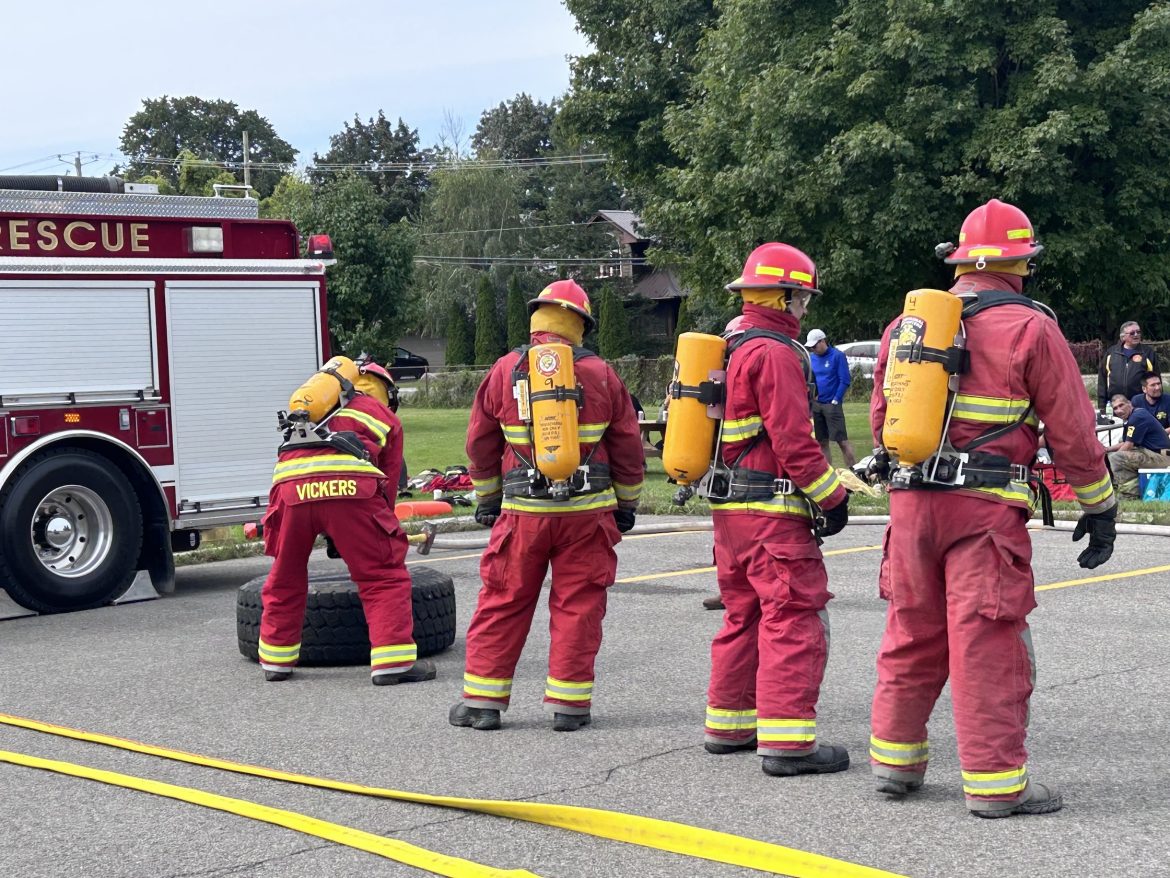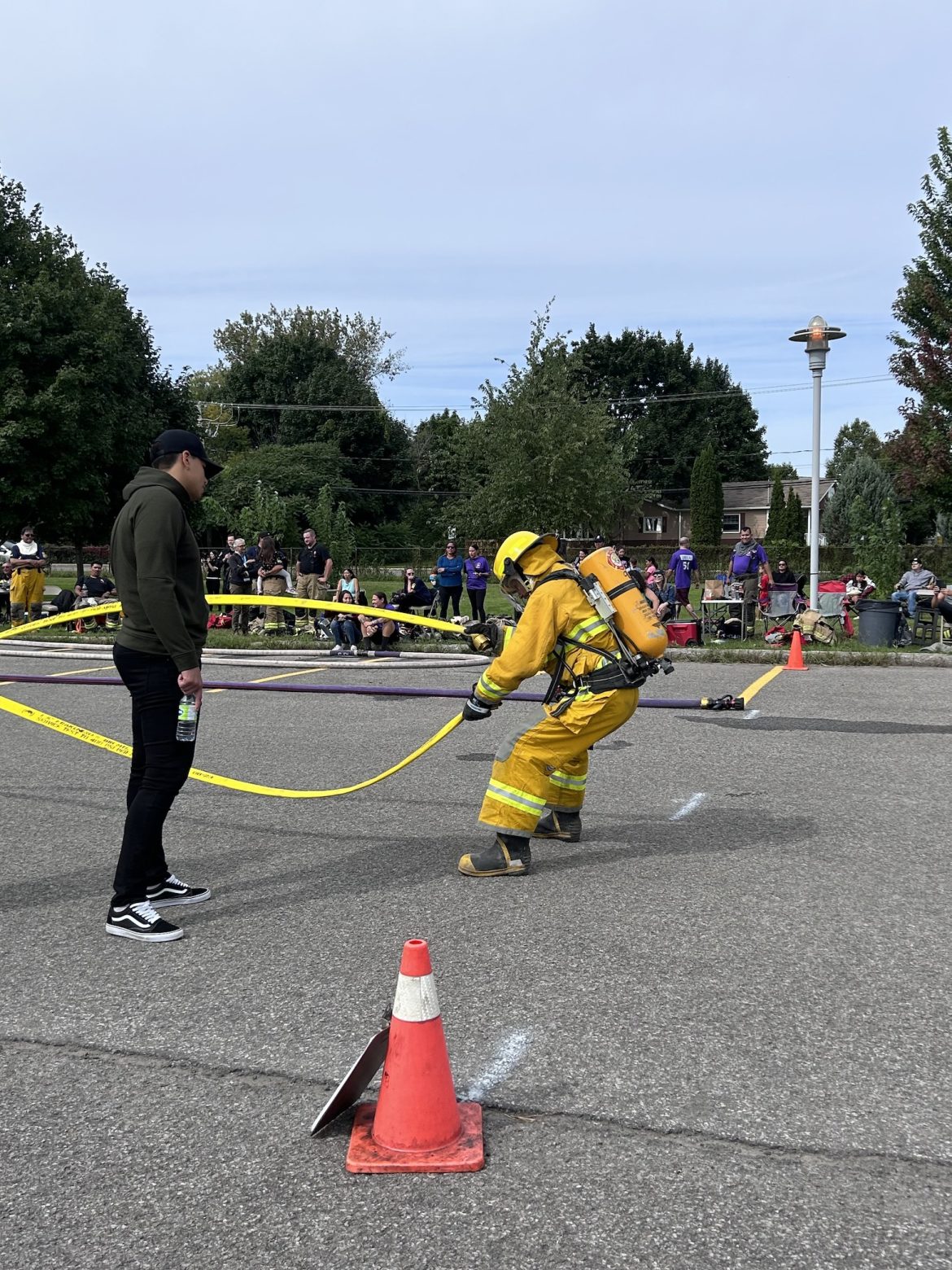
Firefighters compete in the National First Nation Firefighting Competition. Image: National Indigenous Fire Safety Council
By Taylor Truszkowski
Canada is turning to Indigenous fire safety knowledge after record wildfires raged across the country last summer.
Canada’s 2023 wildfire season began early and ended late, producing 6,600 fires by October, according to NASA’s Earth Observatory. While this number is not unusual, the fires were bigger than ever, some earning the status of “megafires.”
Many of these wildfires occurred close to Indigenous communities, according to Indigenous Services Canada. This caused Indigenous populations to be disproportionately harmed.
The National Indigenous Fire Safety Council mitigates fire-damage to Indigenous communities through education and support.
The Indigenous-led group’s mission “means that as a firefighter on-reserve that my voice counts and is used to help create better outcomes for firefighting on-reserve,” said Michelle Vandevord, the group’s president and the associate director of the Saskatchewan First Nation Emergency Services.
“My experience and knowledge are accepted as an expert in my own right among my peers to create safer communities,” Vandevord said. She explained that they are First Nations under the umbrella of Indigenous Services Canada.
“I have been privileged to be a part of some incredible work that is starting to see Indigenous knowledge [become] important in mainstream fire safety,” she said.
One of the purposes of the agency is to provide Indigenous people with a voice in the safety of their communities.
“Our slogan ‘for us by us’ means that all our voices matter and will be used to build an organization that is inclusive,” Vandevord said.
The group, formerly known as the Aboriginal Firefighters Association of Canada, has undergone changes in recent years to better assist firefighting in Indigenous communities, she said.
“We went from a national organization that was supporting and creating small fire safety programs to being able to create sustainable programs that firefighters on-reserve have requested for many years, and that has been exciting,” Vandevord said.
This change led to advancements in public information about fires, Vandevord said.. She said the organization has implemented many programs that were once dreams. She gave the Morbidity and Mortality report as an example.
“I have seen and heard our report used nationally when referring to fires on-reserve,” Vandevord said.
She said that before 2010, structural fires were reported at a national level, but that stopped, restricting access to data.
The organization’s creative minds were able to build a report using other data sources, she said.
The organization also helped insure safety during the wildfires by providing a free digital tool to help communities track and prepare for wildfires. According to a press release, the tool was created to help communities better prepare for and manage their risk.
Government recognition
The Canadian government is incorporating traditional Indigenous fire knowledge into prevention strategies. Organizations like the National Indigenous Fire Safety Council have become leaders in educating the government about traditional practices. One of these practices is cultural burning.

The National Indigenous Fire Safety Council staff. Image: National Indigenous Fire Safety Council.
Cultural burns are lower intensity-controlled fires much like the prescribed burns implemented by land managers today, according to the U.S. Department of Agriculture Forest Service. The difference is that cultural fire is used as an essential part of culture, to cultivate materials and food essential to centuries-long traditions.
Historically, this practice lacked support and recognition from the government. It is now supported by the provincial government in some cases, Vandevord said.
Boots on the ground
The Indigenous fire agency requires an entire network of Indigenous communities, experts and volunteer firefighters.
The Indigenous Fire Marshall Service is its boots-on-the-ground branch, according to its deputy director of operations, Arnold Lazare.

A firefighter competes in the National First Nation Firefighting Competition. Image: National Indigenous Fire Safety Council
Lazare has had a 45-year-long career as a volunteer firefighter, including time spent as a fire chief and as the former director of public safety in his home community, Kahnawake.
House fires also disproportionately affect Indigenous communities, he said. In Canada, the on-reserve death rate from fires is 10.2 times higher than in mainstream communities.
“More recently, 90% of house fires occur in homes that didn’t have a working smoke detector,” he said. “There is a systemic issue where there is a housing shortage, so you have multiple people living in homes.”
It is common within Indigenous communities for three or four families to be living in one home, leading to quicker deterioration of the home and increasing the risk of a fire, he said. “In those cases, they are more economically depressed. They lack available dollars to buy smoke detectors – they believe it becomes a luxury. When really, it should be a necessity.”
This is why the organization conducts safety assessments and education campaigns in Indigenous communities and fire departments.
“We partnered with the Ontario Fire Marshall for a campaign called SAFER, that’s Smoke Alarms For Every Residence,” Lazare said. “It’s a national day of testing smoke alarms.”
“One big issue with Indigenous services is there’s a gap,” Lazare said. “What we are doing is closing that gap to make sure First Nations are included.”